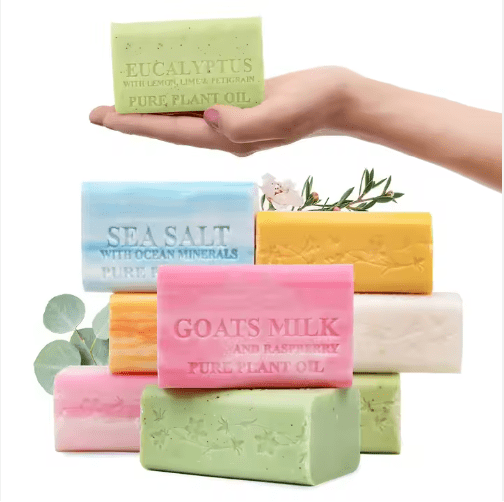Introduction
When it comes to handmade soap, two popular methods dominate the market: cold process soap and hot process soap. Both methods allow brands to create high-quality, natural soaps, but they differ significantly in production techniques, curing times, and the final product’s qualities. For soap brands, understanding these differences is crucial to choosing the right method that aligns with their production goals, brand image, and customer expectations.
Cold Process Soap
Cold process soap is made by mixing oils and lye, then pouring the mixture into molds. This method relies on chemical saponification, where the oils transform into soap over time without external heat.
Advantages of Cold Process Soap:
-
Customizable Formulas: Brands can easily add fragrances, essential oils, colorants, and exfoliants.
-
Smooth and Luxurious Texture: Cold process soap often has a silky, creamy lather that appeals to consumers.
-
Longer Shelf Life: Properly cured cold process soap can last up to 2-3 years without losing quality.
-
High Brand Perceived Value: Artisanal appearance and ability to create unique designs make it attractive for premium brands.
Disadvantages:
-
Longer Curing Time: Cold process soaps require 4-6 weeks to cure before sale.
-
Sensitive to Errors: Mistakes in measuring lye or oils can affect soap quality.
-
Production Limitations: Scaling up production requires careful handling to maintain consistency.
For brands, cold process soap works well when emphasizing natural, handcrafted, and artistic qualities. It’s ideal for boutique or premium soap lines that target consumers who value aesthetics and luxury.
Hot Process Soap
Hot process soap uses heat to speed up the saponification process. After mixing oils and lye, the soap is cooked, often in a slow cooker or double boiler, which allows it to be ready for use much faster than cold process soap.
Advantages of Hot Process Soap:
-
Shorter Production Time: Hot process soap can be ready in a few days, compared to weeks for cold process.
-
Rustic and Natural Look: This method creates a thicker, textured appearance that appeals to natural and eco-friendly markets.
-
Less Risk of Lye Mistakes: The cooking process completes saponification, reducing errors.
-
Flexible Production: Easier to produce in larger batches for consistent results.
Disadvantages:
-
Less Smooth Texture: Hot process soap tends to have a rougher, rustic feel.
-
Limited Design Options: Intricate swirls and artistic designs are harder to achieve.
-
Potentially Shorter Shelf Life: Some hot process soaps may not last as long as cold process soaps, depending on ingredients.
Hot process soap suits brands focused on natural, handmade, and rustic aesthetics, or for businesses prioritizing efficiency and faster turnaround times.
Cold Process vs. Hot Process: Brand Considerations
When choosing between cold process and hot process soap, brands should consider:
-
Target Market: Luxury and artisanal brands may prefer cold process soap, while eco-friendly and rustic brands may lean toward hot process.
-
Production Speed: Hot process soap allows quicker batch production, which can improve cash flow.
-
Design and Customization: Cold process soap excels in aesthetic design and customization.
-
Shelf Life and Storage: Cold process generally offers longer shelf life, ideal for long-term inventory management.
Ultimately, neither method is strictly “better” than the other. The choice depends on brand positioning, production capacity, and consumer preferences. Many successful soap brands even use both methods to diversify their product lines.
Conclusion
Both cold process and hot process soap offer unique benefits for brands. Cold process soap shines with luxury, intricate designs, and long shelf life, while hot process soap offers speed, rustic charm, and production efficiency. By understanding these differences, brands can make informed decisions that align with their identity, production goals, and target audience.
Choosing the right soap-making method is not just about production—it’s about crafting a brand experience that resonates with consumers and highlights the value of handmade, high-quality soap.

